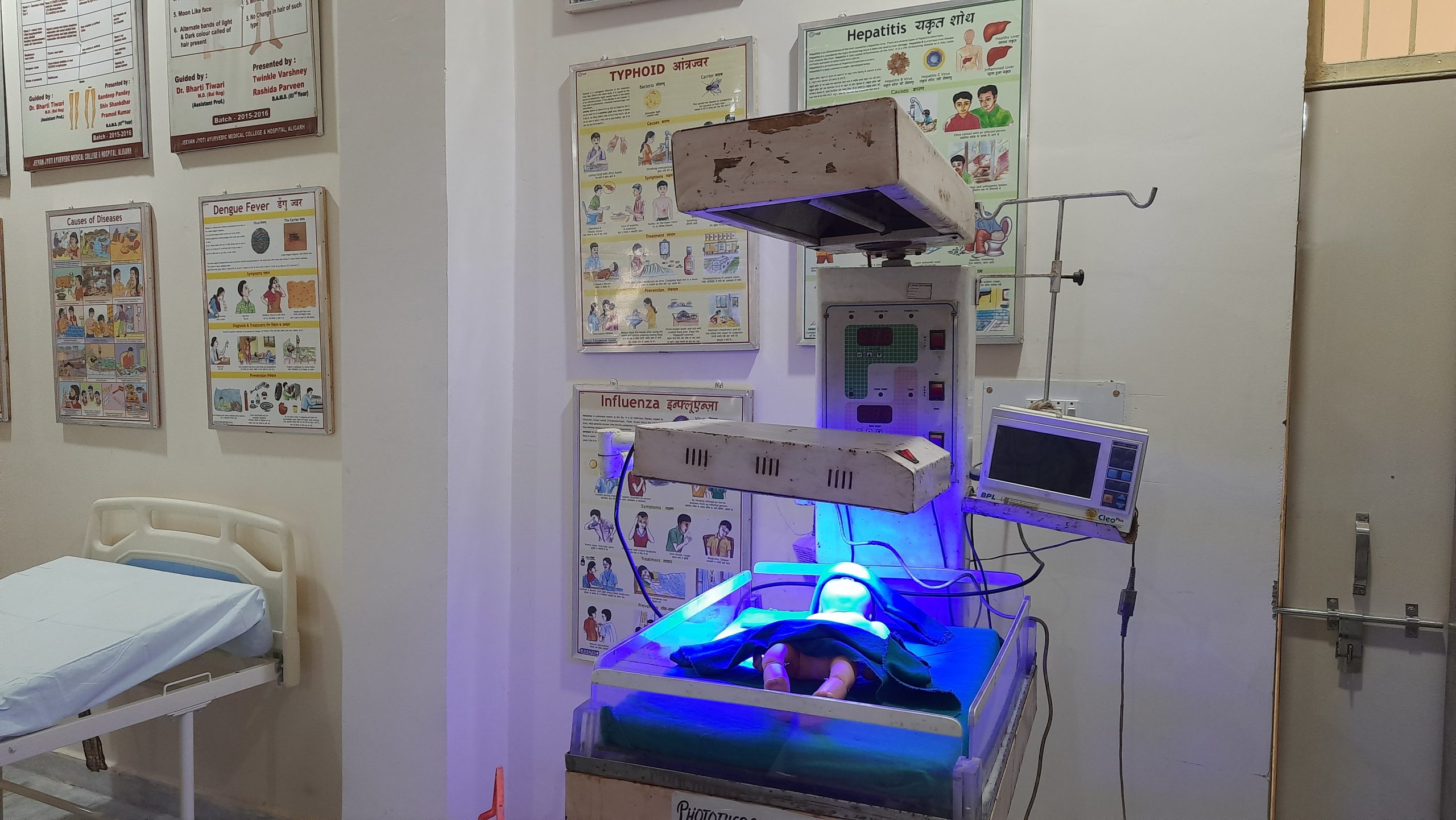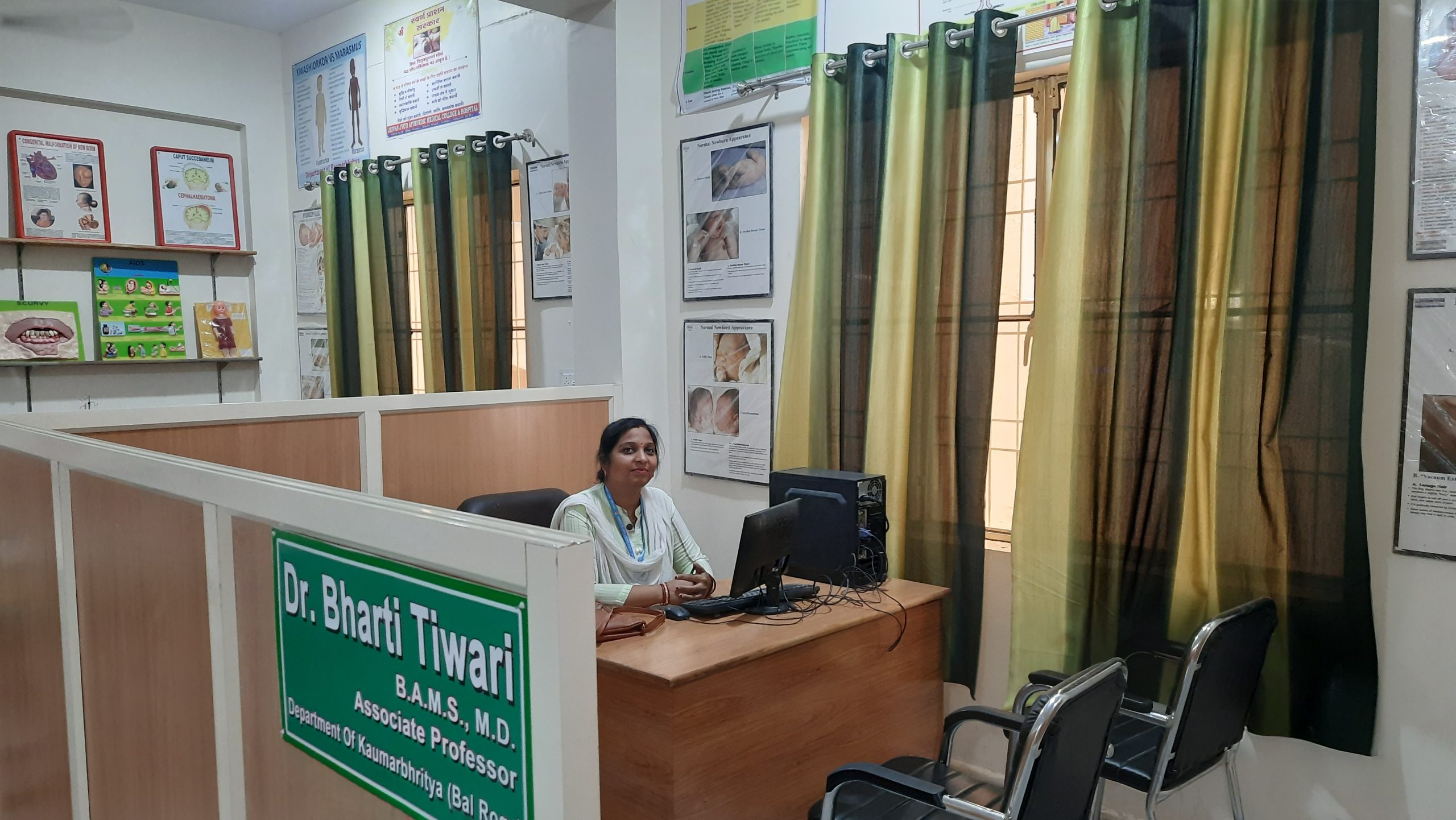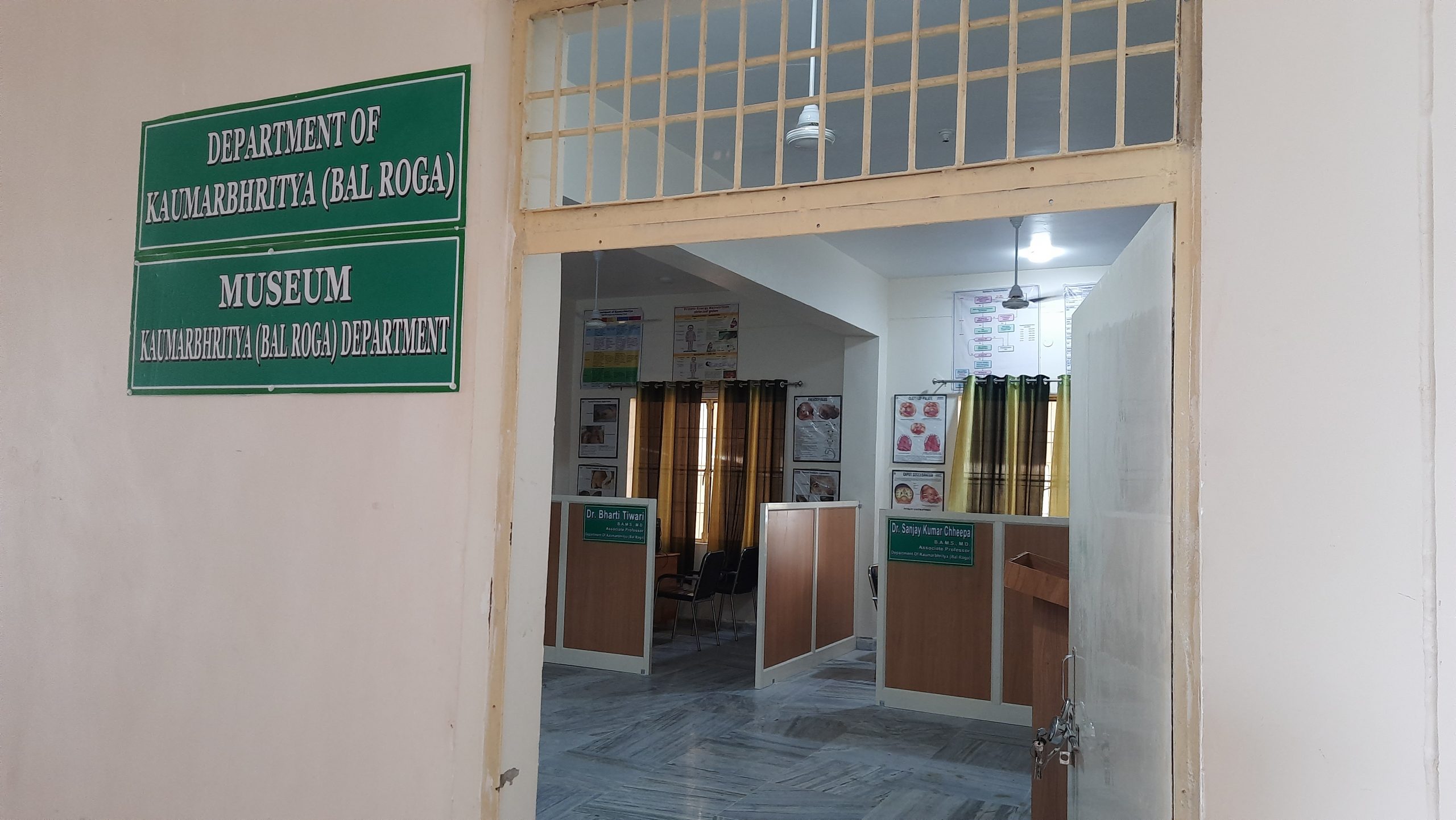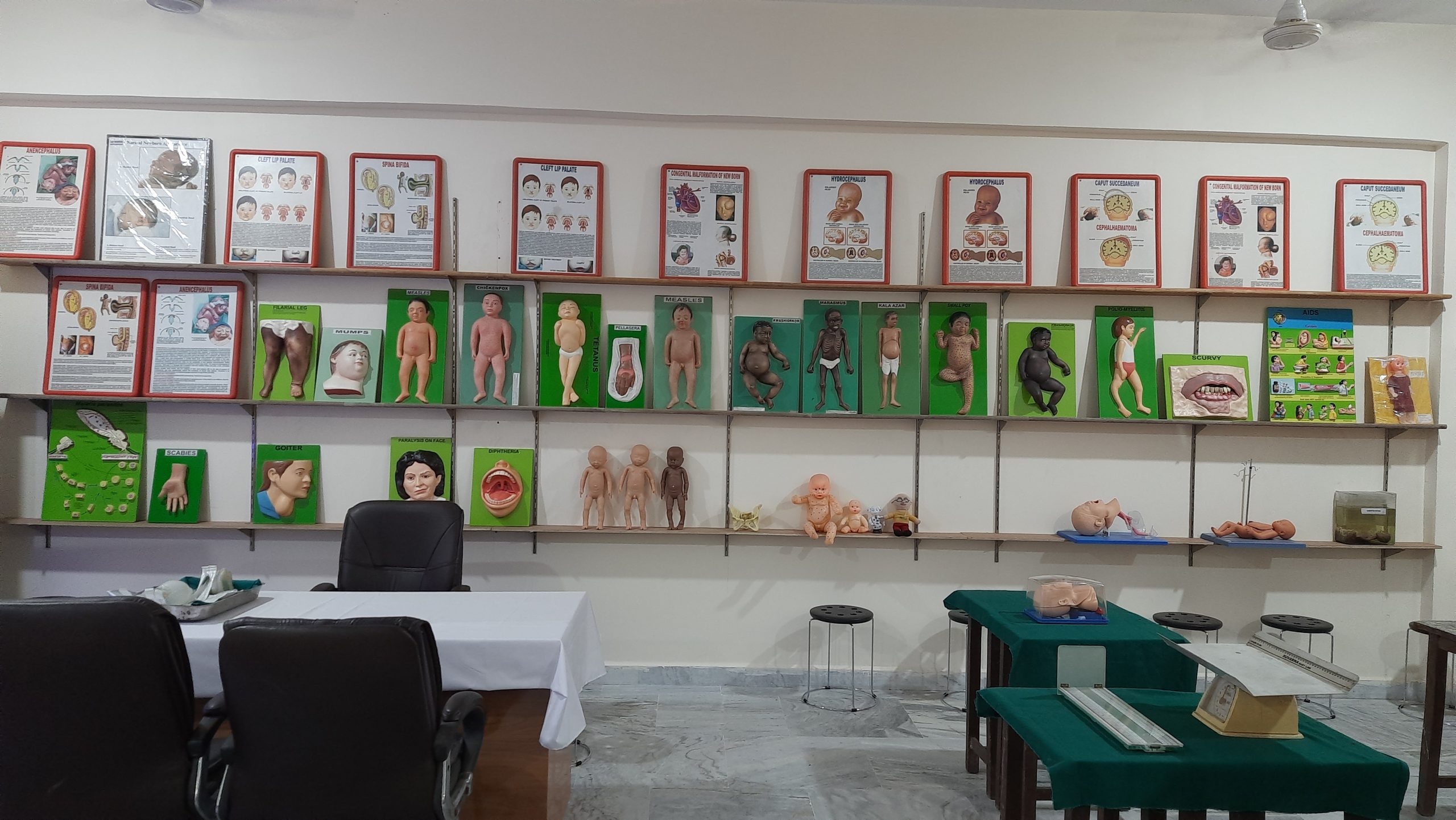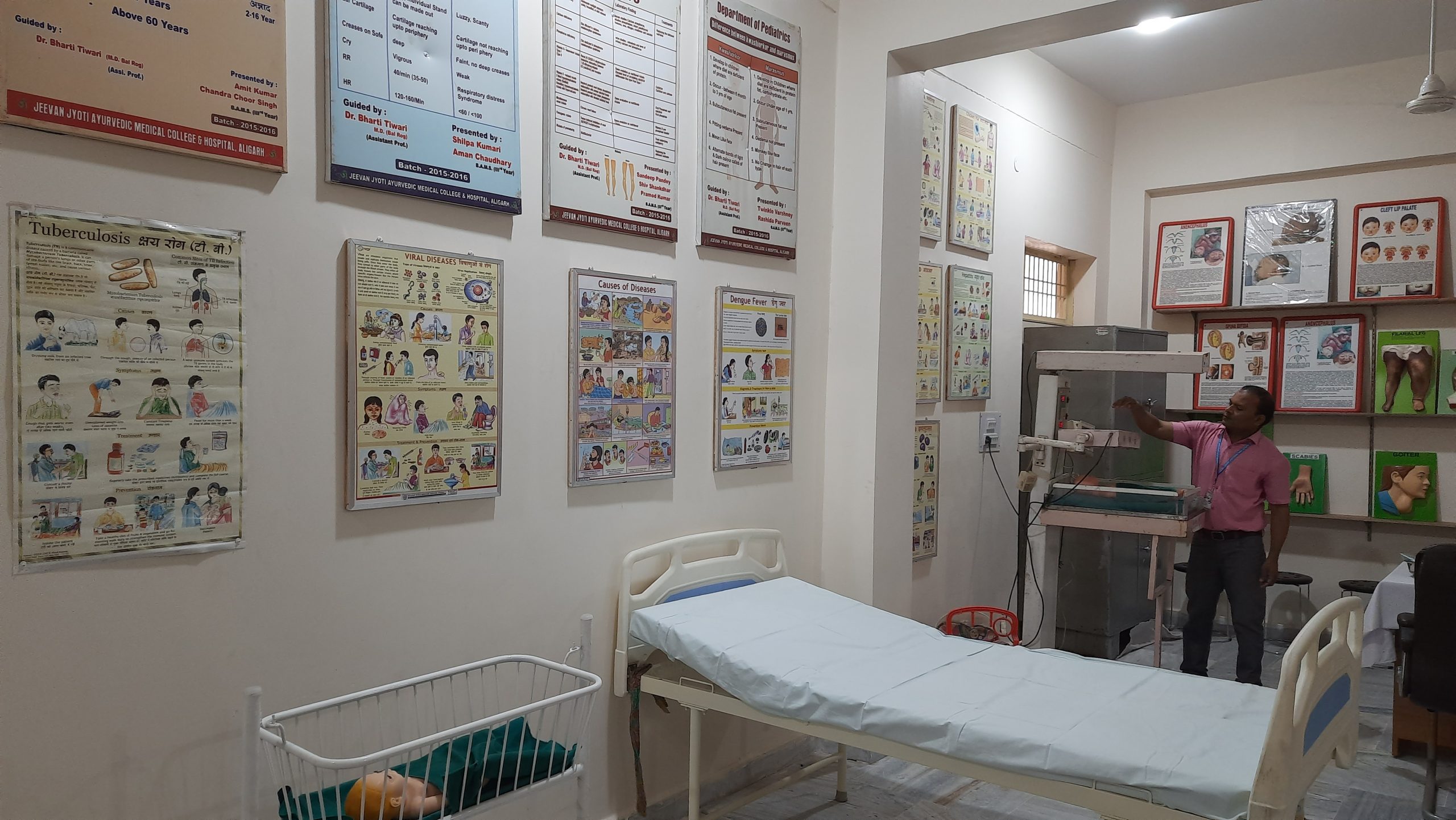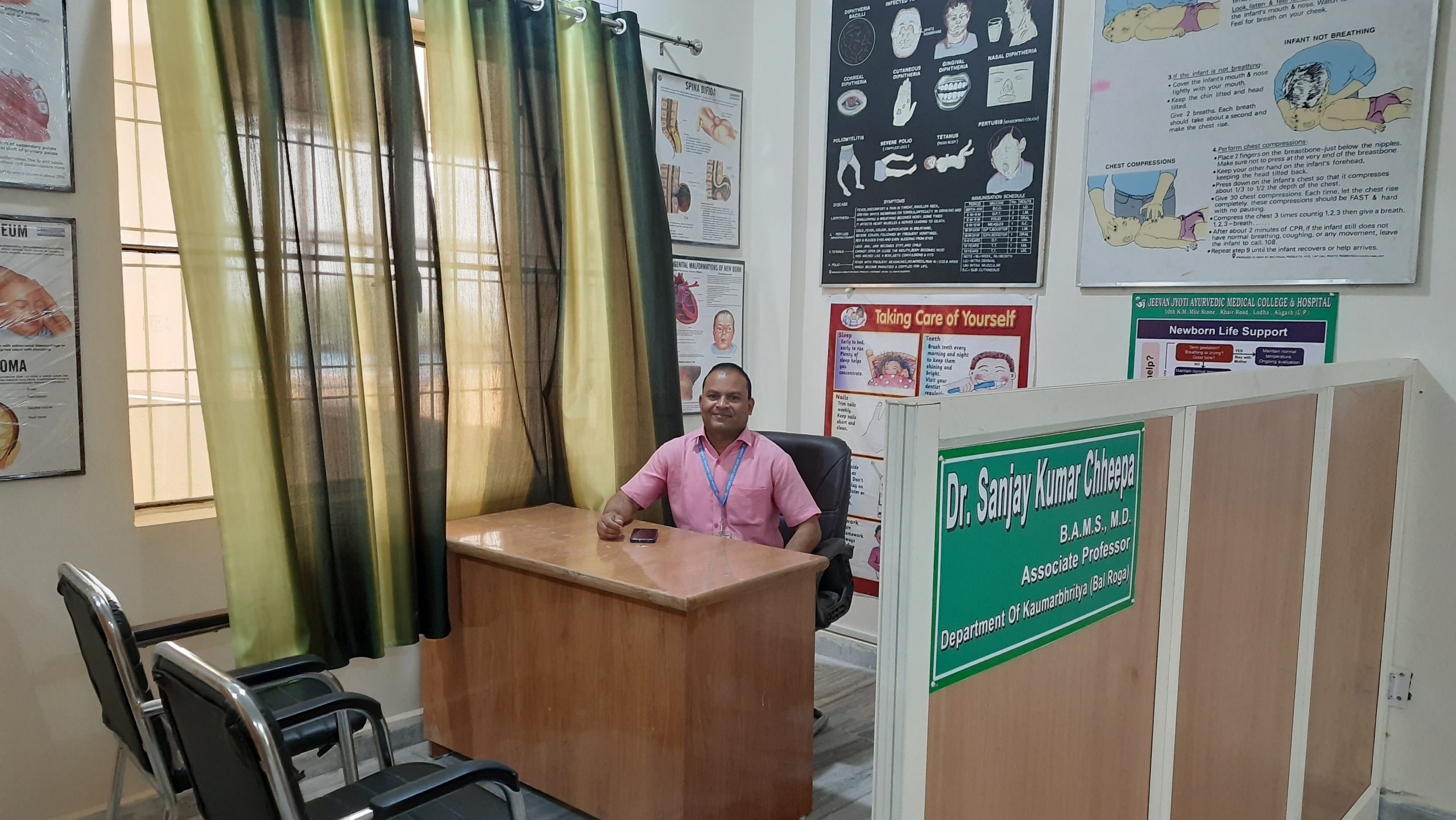Bal Roga is one of the most important branches of Ayurveda. This branch deals with neonatal Care, infant feeding, diet for newborn, daily and seasonal regime and also deals with diseases & disorders relating to children including nutrition of children, immunization etc.
- INTRODUCTION – Balaroga/ Kaumarbhritya department is a speciality area dedicated to the treatment, care, and welfare of newborns, children and adolescents. It emphasises the special medical requirements of patients from birth to adolescence, covering their mental, physical, and developmental well-being. Kaumarbhritya is one of the eight branches of Ayurveda that deals with care of children from conception to maturity. It includes the diagnosis, prevention, and treatment of childhood diseases as well as care of the mother and newborn.
- VISION & MISSION –
- To be a leading center of excellence in pediatric healthcare, ensuring every child achieves optimal health, development, and well-being in a compassionate, innovative, and child-friendly environment.
- To provide exceptional pediatric care, promote healthy development, empower families, and advance pediatric healthcare through research and education.
- To provide treatment for childhood diseases including malnutrition, allergic disorders, muscular disorders, behavioural disorders such as Autism, ADHD through Ayurveda medications and various panchakarma procedures.
- Boosting the immunity and well-being of the child through Swarnaprasana, is practiced regularly in the department.
This vision and mission align with the goal of nurturing a generation of healthy, resilient, and thriving children.
Objective –
To Make UG students able to recognize the key importance of child health care and to participate at primary level.
Methodology –
Clinical training by way active involvement in OPD, Pediatric ward, Case Presentation & clinical discussion.
ACADEMIC FACILITIES-
- Simulation Labs: Hands-on training in pediatric and neonatal care.
- Clinical Training: Bedside learning in wards, clinics, and ICUs.
- Library Resources: Access to pediatric books, journals, and e-learning platforms.
- Research Opportunities: Facilities for clinical and multidisciplinary research.
- Residency Programs: Structured training for medical students and fellows.
- CME and Workshops: Regular skill-enhancement and knowledge-updating sessions.
- Community Programs: Public health initiatives and outreach activities.
